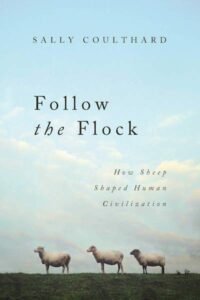 I’ve recently taken up the conscious practice of avoiding the use of animals as representational embodiments of negative qualities in humans. From “cowed” to “eating like a pig” (and don’t even get me started on “dogging”…), we’ve long employed metaphors based on what we think we know about our fellow non-human animals that are, in fact, too often everything from partial misunderstandings to simply flat-out wrong. And of all the animals that figure prominently in our figurative language, sheep are among the most – if not actually the most – commonly used.
I’ve recently taken up the conscious practice of avoiding the use of animals as representational embodiments of negative qualities in humans. From “cowed” to “eating like a pig” (and don’t even get me started on “dogging”…), we’ve long employed metaphors based on what we think we know about our fellow non-human animals that are, in fact, too often everything from partial misunderstandings to simply flat-out wrong. And of all the animals that figure prominently in our figurative language, sheep are among the most – if not actually the most – commonly used.
From the insulting “don’t be a sheep,” to the Biblical “separating the sheep from the goats,” to the simply gory “like a lamb to the slaughter,” we seem unusually fond of employing – often contemptuously – these long-time companions of our human existence into our language in ways that belie the truth about them and wholly ignoring the vital roles they have historically played in the development of human cultures. Perhaps familiarity does indeed breed contempt.
And it is the story of this very familiarity, the millennia-long history of our existence with the various domesticated members of the genus of Ovis if not literally by our sides then very closely guarded nearby, that Sally Coulthard recounts in her new Follow the Flock; How Sheep Shaped Human Civilization. Reaching all the way back into the Neolithic and following the interweaving of sheep with human cultures right up to the present day, Ms. Clouthard offers us all a chance to learn, as well as to re-examine what we think we know, about these long-familiar, historically important, and far-too-often maligned fellow creatures.
Available from:
If you enjoyed reading this, please consider signing up for The Well-read Naturalist's newsletter. You'll receive a helpful list of recently published reviews, short essays, and notes about books in your e-mail inbox once each fortnight.

